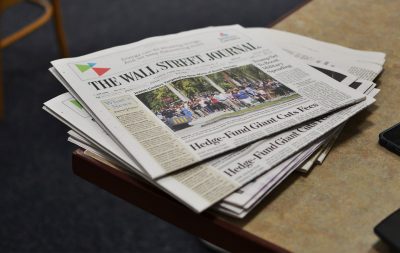
A group of journalists, researchers, scientists and academics came together for a hackathon called “Hack Our Digital Age” at Harvard Law School on Saturday. Harvard hosted several small companies that dedicate their work to eliminating the widespread distribution of fake news on the internet.
Hoaxy, a collaboration between Indiana University Network Science Institute member Filippo Menczer, Indiana Ph.D students Gregory Maus, Lei Wang and visiting doctoral student Chengcheng Shao, was one of the only programs at the hackathon that had successfully partnered with a nonprofit research organization and created a working website on fact checked news versus alternative news on Twitter.
“Our project is essentially a platform for journalists, researchers and independent developers to work together and develop the tools for understanding the spread of misinformation,” Maus said.
Maus said his main goal is to get academics and journalists to work together because he firmly believes one of the main issues with the spread of fake news today is the lack of communication between the two.
“Even individual academics aren’t talking with each other on the subject,” Maus said. “They could learn a great deal from each other but they’re not talking because there is no single platform for studying this information.
Maus’ website will hopefully bridge this gap, he said, and actually lead to a better understanding of the origins and detection of fake news online, he said.
“Alternatively, we would be showing research in academia and [in] a think tank and translating what that actually means to a lay audience,” Maus said.
Hoaxy is very accessible to the public. It consists of a search engine where one can enter a key phrase, and at once, have articles pertaining to that subject pop up on the page, Maus said.
The articles marked in purple are from “sources that often publish inaccurate, unverified, or satirical claims,” and the articles in orange are from “independent fact-checking organizations,” according to Hoaxy’s website. By checking off some of the boxes as well, Maus said he “visualized” how different types of articles spread on Twitter.
Maus has been working extensively with First Draft News, a company, created by Aimee Rinehart, that dedicates itself to debunking false stories online.
“We’ve gathered together hundreds of news organization around the world,” Rinehart said. “We are trying to improve the public’s understanding of news today and discern what’s true and what’s not and reliable sources. This coalition will hopefully offer a more neutral balance and space.”
First Draft News is working on making sure that the public comprehends possible biases in the media, and then how to properly address it. First Draft is hoping to bring Hoaxy under its tutelage and further the understanding of bias and fake news in media, said Rinehart.
While the gap between the public and the individuality among certain groups of people has led to a standstill in the prevention of fake news, there are other causes of the phenomenon that is currently tearing through America.
“I just think it’s hard to break out — when you’re a journalist, you stay in your newsroom,” Rinehart said. “Everybody silos themselves off. Some of it’s self-done, some of its industry-wide.”
Rinehart said she believes the intense competition between some of these industries to simply stay afloat has led to some of this lack of communication between fields. A miscommunication between fields then leads to fake news being released and spread around with no one’s knowledge.
“It’s important for journalists to understand that because, essentially, misinformation is their competitor and so understanding how it spreads and how it works is an effective way to counter it,” Maus said.
As Hoaxy works to benefit the fairness and accuracy of all journalists, it is important to understand how certain journalists may feel about this software, and others that may appear soon.
“As far as I can tell, Hoaxy doesn’t check facts — it aggregates the work of others who say they check facts,” said Lou Ureneck, a journalism professor in Boston University’s College of Communication. “It also traces the distribution networks of news including fake news. I am familiar with Snopes, which seems to do a good job of checking assertions, but it can’t check everything.”
Ureneck went on to explain that “the best safeguard against fake news is an independent and professional press corps that verifies information before publication.”
With software tools like Hoaxy, this miscommunication between fields, at personal levels and across all media landscape, could greatly decrease, Ureneck said. Now that the current era is almost completely digital, Hoaxy and First Draft News could be a way into fair and accurate reporting, he added.
While Ureneck may not necessarily agree with Hoaxy’s platform, he said he strongly believes that fake news is dangerous.
“It distorts reality and poisons the discussion that is necessary to a democracy,” Ureneck said. “Citizens need to bring a high level of skepticism to their sources of information. Publication on the internet doesn’t make something true.”













Interesting article.